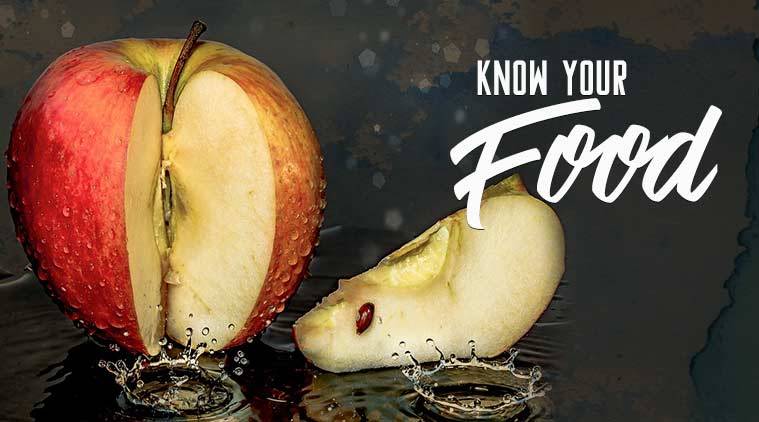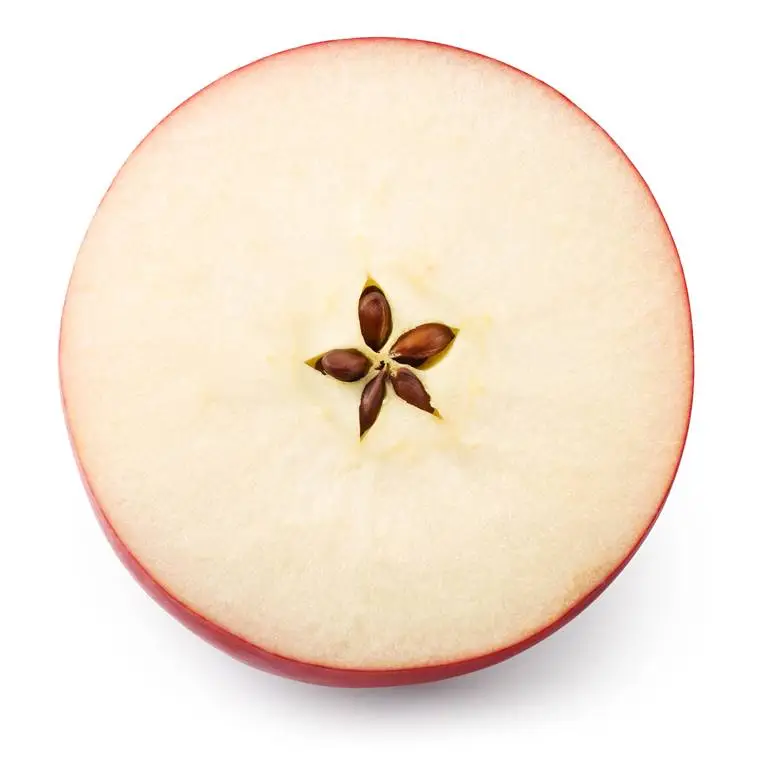 Though a nutritious food, the seeds of apple can be poisonous and even cause death. (Designed by Nidhi Mishra/ Indian Express)
Though a nutritious food, the seeds of apple can be poisonous and even cause death. (Designed by Nidhi Mishra/ Indian Express)
Ever wondered if your mum was right or not when she parroted to you how “An apple a day keeps the doctor away”? While we were reminded of that enough times to accept apples as an inescapable route to healthy living, research shows the seeds present in the fruit can actually be poisonous.
Though a highly nutritious food, the pips or seeds inside it are said to contain amygdalin, which on ingestion breaks down into hydrogen cyanide, a poisonous substance. However, for amygdalin, to become toxic, it needs to come in contact with digestive enzymes that happens only if you chew or crush the seeds.
So, what is cyanide?
One of the deadliest poisons in the world, cyanide is commonly known as the king of poisons. Interestingly, it has left a bloody trail in history with many using it as a weapon to eliminate political opponents or adversaries. During the second World War also, a strong concentration of the hydrogen cyanide (HCN) gas was used in concentration camps to gas Jews.
How does cyanide work?
When cyanide is ingested, it interferes with the cell functioning and does not allow them to utilise the oxygen present in the bloodstream, says Dr Shilpa Mehta, Assistant Professor, Ramjas College, University of Delhi. However, the body has different ways of handling little and heavy doses of cyanide. When taken in a small amount, cyanide is eliminated by the body through intrinsic biochemical pathways, and certain enzymes convert it into thiocyanate that can be excreted in urine, adds Dr Mehta.
Larger doses, on the other hand, completely overwhelm the body’s ability to change cyanide into thiocyanate and suffocate the cells, which eventually die off.
 Apple seeds contain a micro quantity of cyanide. (Source: Getty Images)
Apple seeds contain a micro quantity of cyanide. (Source: Getty Images)
How much cyanide in apple seeds can be poisonous?
The amount of cyanide that will have severe effects on the body depends on the body weight of a person. Dr Sanjith Saseedharan, head of Intensive Care Unit, SL Raheja Hospital, says that apple seeds contain about one mg of cyanide and for any fatality, the concentration should be around 100-200 mg. He advises that apples are completely safe and a highly nutritious food. For seeds to be really poisonous, one would have to consume around 40-50 cores in an hour.
Amygdalin is also found in the pits and seeds of apricots, cherries and plums. In the 1950s, a partly man-made, purified form of this substance, called Laetrile was patented and became a popular alternative for cancer treatment. However, it’s now banned by the FDA and while many believe it to have effects on cancer, no controlled clinical trials have been there to back it up.